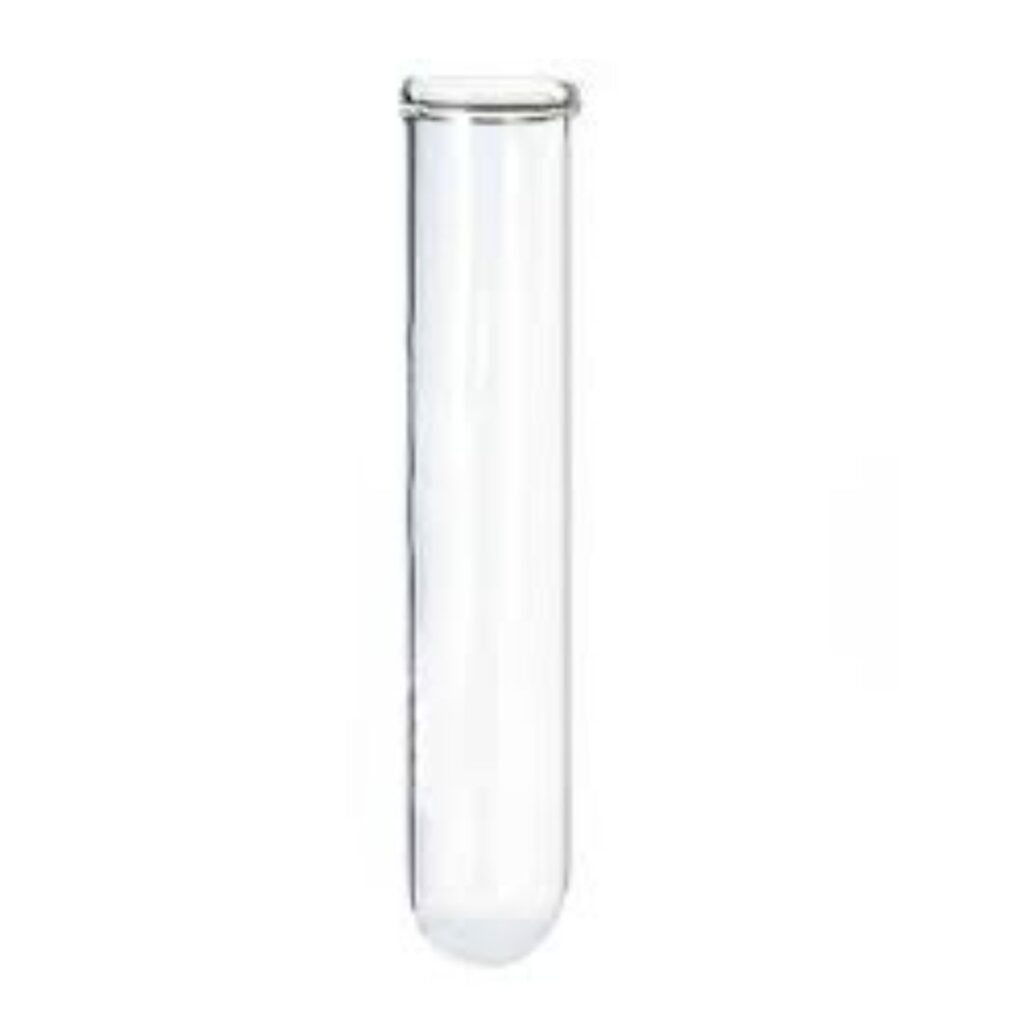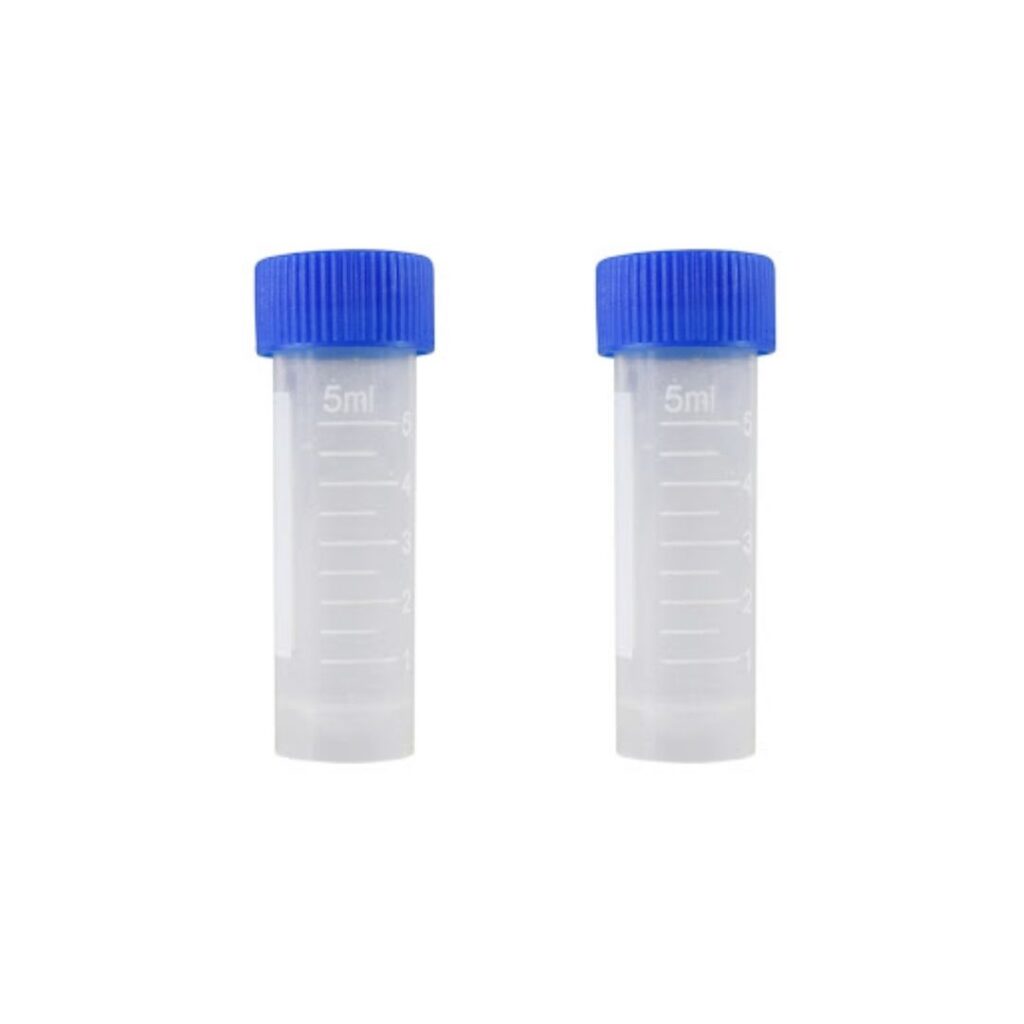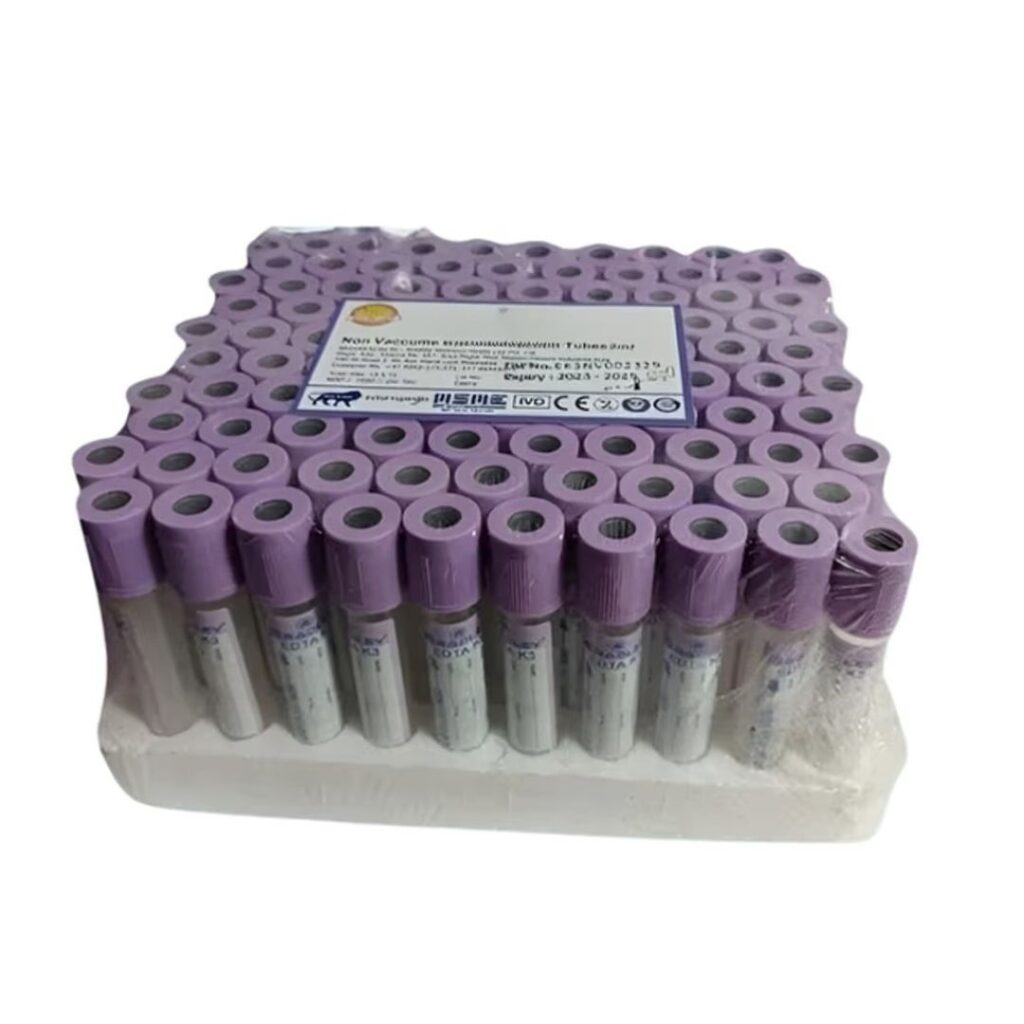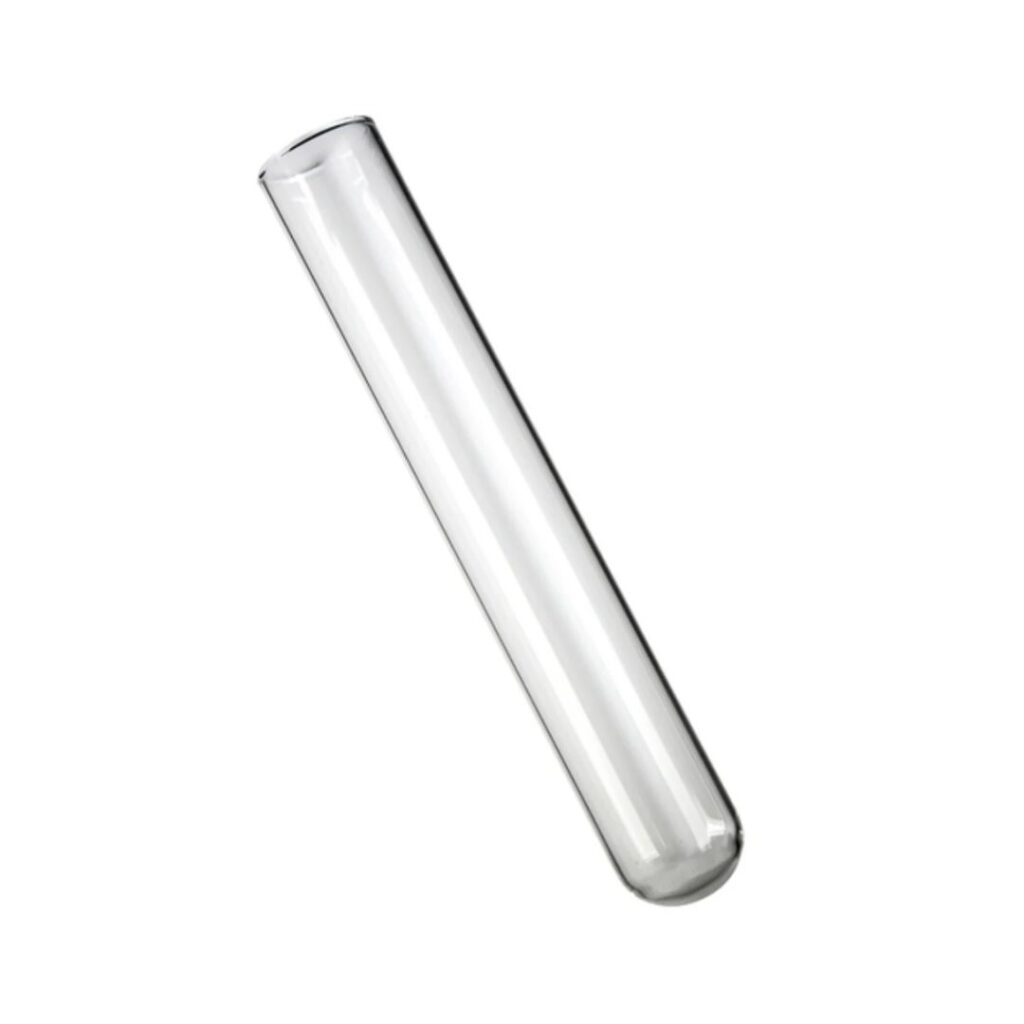-
-
 Cardiology
Cardiology
-
 Clinical Oncology
Clinical Oncology
-
 Dental
Dental
-
 Dermatology
Dermatology
-
 Ear, Nose, Throat (ENT)
Ear, Nose, Throat (ENT)
-
 Endocrinology
Endocrinology
-
 Gastroenterology
Gastroenterology
-
 General Surgery
General Surgery
-
 Gynecology & Obstetrics
Gynecology & Obstetrics
-
 Interventional Cardiology
Interventional Cardiology
-
 Nephrology
Nephrology
-
 Neurology
Neurology
-
 Oncology Surgery
Oncology Surgery
-
 Ophthalmology
Ophthalmology
-
 Orthopedics
Orthopedics
-
 Pediatrics
Pediatrics
-
 Pediatrics Surgery
Pediatrics Surgery
-
 Physiotherapy
Physiotherapy
-
 Plastic Surgery
Plastic Surgery
-
 Psychiatry & Psychology
Psychiatry & Psychology
-
 Radiology
Radiology
-
 Urology
Urology
-
 Vascular Surgery
Vascular Surgery
-
Dark Blue Vacutainer Tube/Vial – A Comprehensive Guide for Everyone

Contents
- What Is a Dark Blue Vacutainer Tube/Vial?
- Understanding the Purpose of Dark Blue Vacutainer Tubes
- Key Components and Material Used in Dark Blue Vacutainer Tubes
- Additives Present in Dark Blue Vacutainer Tube/Vial
- How Dark Blue Vacutainer Tubes Differ from Other Blood Collection Tubes
- Importance of Dark Blue Vacutainer Tubes in Laboratory Testing
- Common Tests Performed Using Dark Blue Vacutainer Tubes
- Role of Dark Blue Vacutainer Tubes in Trace Element Analysis
- Why Contamination Control Is Critical for Dark Blue Vacutainer Tubes
- Types of Dark Blue Vacutainer Tubes Available in the Market
- Volume Capacity and Size Variations of Dark Blue Vacutainer Tubes
- Proper Blood Collection Procedure Using Dark Blue Vacutainer Tubes
- Correct Order of Draw for Dark Blue Vacutainer Tubes
- Handling and Storage Guidelines for Dark Blue Vacutainer Tubes
- Safety Precautions While Using Dark Blue Vacutainer Tubes
- Common Errors to Avoid When Using Dark Blue Vacutainer Tubes
- Quality Standards and Certifications for Dark Blue Vacutainer Tubes
- Applications of Dark Blue Vacutainer Tubes in Clinical and Research Settings
- Advantages of Using Dark Blue Vacutainer Tubes in Accurate Testing
- Choosing the Right Dark Blue Vacutainer Tube for Laboratory Use
- Shelf Life and Expiry Considerations of Dark Blue Vacutainer Tubes
- Regulatory Guidelines and Compliance for Dark Blue Vacutainer Tubes
- Conclusion
- Frequently Asked Questions About Dark Blue Vacutainer Tube/Vial
When it comes to blood collection, precision is everything. Among the various types of vacutainer tubes used in laboratories, the dark blue vacutainer tube stands out for its unique purpose and significance. But what exactly makes this tube so essential? From understanding its components to exploring its applications in laboratory testing, navigating through all things related to dark blue vacutainers can feel overwhelming. Whether you’re a healthcare professional or simply curious about laboratory processes, this comprehensive guide will shed light on every aspect of dark blue vacutainer tubes and why they are crucial for accurate diagnostics. Let’s dive into the fascinating world of these little but powerful vials!
What Is a Dark Blue Vacutainer Tube/Vial?
A dark blue vacutainer tube, also known as a vial, is an essential tool in the realm of blood collection. Its distinct color indicates its specialized function. Primarily used for collecting samples that require trace element analysis, this tube holds significant importance in laboratory settings.
Unlike standard tubes, dark blue vacutainers are designed to minimize contamination risks. They contain specific additives or coatings aimed at preserving the integrity of the sample collected. This makes them particularly valuable for tests involving metals like lead or mercury.
The construction of these vials typically incorporates materials that prevent interference with test results. Their design ensures compatibility with various analyzers and testing protocols commonly found in laboratories today. Understanding what sets dark blue vacutainers apart can enhance accuracy in diagnostic processes and ensure reliable outcomes for patients’ health assessments.
Understanding the Purpose of Dark Blue Vacutainer Tubes
Dark blue Vacutainer tubes serve a crucial role in blood collection and analysis. Their primary purpose is to collect samples for trace element testing, making them essential for accurate diagnostic procedures.
These tubes are specifically designed to minimize contamination from external substances. This ensures that the results of tests are reliable and valid.
Healthcare professionals use dark blue tubes mainly when analyzing metals like lead, cadmium, or mercury. The integrity of these samples is vital since even the smallest amount of contamination can skew results.
This precise function makes dark blue Vacutainers indispensable in both clinical laboratories and research settings. By maintaining rigorous standards during sample handling, they help ensure patient safety and effective treatment plans based on accurate data.
Key Components and Material Used in Dark Blue Vacutainer Tubes
Dark blue vacutainer tubes are specifically designed for precise blood collection and analysis. Their construction is vital for maintaining the integrity of samples.
Typically, these tubes are made from high-quality glass or plastic. The choice of material impacts both durability and chemical compatibility.
The cap on dark blue vacutainer tubes features a secure closure that prevents leaks while ensuring a tight seal to protect against external contaminants. This design helps maintain sample stability during transport.
Additionally, the inner coating often consists of materials that minimize interaction with trace elements. This is crucial when analyzing specific components within the blood, where even minute contamination can skew results.
In essence, every component in a dark blue vacutainer tube serves a distinct purpose aimed at enhancing accuracy in laboratory testing. These meticulous designs reflect the importance placed on reliable diagnostics in healthcare settings.
Additives Present in Dark Blue Vacutainer Tube/Vial
Dark blue Vacutainer tubes are specifically designed for trace element analysis and contain unique additives that play a crucial role in sample integrity. One of the most common additives found in these tubes is sodium heparin, an anticoagulant that helps prevent blood clotting during storage.
Additionally, some dark blue vials may have a dedicated coating to minimize contamination from trace elements present in other materials. This ensures accurate results when analyzing metals such as lead or mercury.
It’s worth noting that not all dark blue tubes are identical; variations exist depending on the manufacturer and intended use. Understanding which additive is present can significantly impact test outcomes.
Laboratories must be aware of these differences to ensure they select the appropriate tube for their specific testing requirements. Proper usage fosters reliable data collection and maintains the quality needed for precise laboratory analyses.
How Dark Blue Vacutainer Tubes Differ from Other Blood Collection Tubes
Dark blue Vacutainer tubes are specifically designed for trace element testing. Unlike other blood collection tubes, they prioritize contamination prevention. This is crucial since even minute traces of metals can skew test results.
The interior coating of dark blue tubes often contains no additives or anticoagulants, setting them apart from standard red top or lavender top tubes that contain various preservatives. This absence allows for a clean sample, essential in accurate analysis.
Moreover, their color coding helps laboratory personnel quickly identify the intended use when processing tests. While both types serve critical roles in diagnostics, dark blue options cater explicitly to specialized tests requiring utmost purity and precision.
Their unique composition also ensures compatibility with sensitive assays that might react adversely to other tube materials or coatings commonly found in different vials.
Importance of Dark Blue Vacutainer Tubes in Laboratory Testing
Dark blue Vacutainer tubes play a pivotal role in laboratory testing, particularly when it comes to trace element analysis. Their design minimizes contamination, which is crucial for obtaining accurate results.
These tubes are specifically designed to prevent any interference from additives often found in other blood collection vials. This precision ensures that tests measure only the substances of interest.
In many labs, dark blue tubes are essential for evaluating heavy metals and nutritional elements. The accuracy provided by these tubes directly impacts patient diagnosis and treatment plans.
Additionally, their use can significantly improve quality control processes within laboratories. By maintaining strict standards during blood sample collection, healthcare providers ensure reliable outcomes essential for effective medical care.
Common Tests Performed Using Dark Blue Vacutainer Tubes
Dark blue vacutainer tubes are essential for specific laboratory tests, particularly those related to trace elements. These tubes play a crucial role in collecting samples that require minimal contamination.
One of the most common applications is measuring heavy metals like lead, mercury, and arsenic levels in blood. Accurate results depend on using these specialized tubes to prevent external interference.
Additionally, dark blue vacutainers are used for nutritional assessments. They help evaluate mineral deficiencies and toxicities by analyzing serum or plasma samples.
Another important test conducted with these tubes involves monitoring zinc and copper levels. This is vital for diagnosing various health issues linked to nutrient imbalances.
Laboratories also rely on them for research purposes involving metabolic studies. The integrity of the sample collected in dark blue vacutainers ensures reliability during analysis.
Role of Dark Blue Vacutainer Tubes in Trace Element Analysis
Dark blue vacutainer tubes play a crucial role in the realm of trace element analysis. Their design minimizes contamination, ensuring that results reflect true sample integrity.
These tubes are specifically formulated to collect blood samples for testing elements such as lead, mercury, and arsenic. The absence of additives that could interfere with analyses is one key feature distinguishing them from other collection tubes.
Laboratories depend on these specialized tubes when measuring low concentrations of metals. Even minute levels can yield significant insights into patient health or environmental exposure.
Proper handling and storage practices enhance reliability in test outcomes. By using dark blue vacutainer tubes, healthcare professionals improve diagnostic accuracy while safeguarding against potential false readings due to external contaminants.
This attention to detail is vital for making informed decisions based on trace element data.
Why Contamination Control Is Critical for Dark Blue Vacutainer Tubes
Contamination control is vital when using dark blue vacutainer tubes. These specialized tubes are designed for trace element analysis, which requires an exceptionally clean environment to ensure accurate results.
Even minute amounts of contamination can skew test outcomes. Elements from the environment or even from the collection process can lead to inaccurate readings, impacting patient diagnosis and treatment plans.
Proper handling practices must be enforced at every stage—collection, storage, and transport. Lab personnel should wear gloves and avoid touching the inner surfaces of these tubes.
Additionally, strict adherence to sterilization protocols helps maintain tube integrity and reliability in testing situations. Any lapse could compromise a series of tests that depend on precise measurements.
Awareness of potential contaminants ensures laboratory professionals uphold high standards in their work while providing crucial insights into patient health through reliable lab results.
Types of Dark Blue Vacutainer Tubes Available in the Market
Dark blue Vacutainer tubes come in various types, each designed for specific laboratory applications. These options include those with different additives and sizes to cater to diverse testing requirements.
One common type is the dark blue top tube containing sodium heparin, which is ideal for certain plasma tests. Another variant features EDTA as an anticoagulant, preventing clotting while preserving biological samples.
Additionally, you can find sterile versions intended for microbiological studies. These are crucial when contamination could skew results.
Size variations generally range from 2 mL to 10 mL capacities. Smaller tubes may be used for pediatric patients or specialized tests requiring minimal sample volume.
Choosing the right type ensures accurate test outcomes and maintains sample integrity during analysis. Always check labels carefully to confirm that you’re using the appropriate tube for your specific testing needs.
Volume Capacity and Size Variations of Dark Blue Vacutainer Tubes
Dark blue Vacutainer tubes come in various sizes, catering to different laboratory needs. The most common volume capacities are 4 mL and 6 mL. Each size serves specific testing requirements, ensuring accuracy and reliability.
The choice of tube size often depends on the tests being conducted. For instance, smaller volumes may be sufficient for routine analyses, while larger ones might be necessary for comprehensive screenings or specialized tests.
Size variations also play a crucial role in sample stability. Using the right capacity helps minimize hemolysis and ensures optimal preservation of blood components during transport and storage.
Laboratories must carefully consider which size to use based on their protocols. Selecting the appropriate dark blue Vacutainer tube can significantly impact test outcomes and overall efficiency in clinical settings.
Proper Blood Collection Procedure Using Dark Blue Vacutainer Tubes
To ensure accurate results, proper blood collection is crucial when using dark blue Vacutainer tubes. Start by preparing the work area and gathering all necessary supplies.
Begin with patient identification and confirm that they have been informed about the procedure. Use appropriate personal protective equipment (PPE) to maintain safety standards throughout the process.
Cleanse the puncture site thoroughly with an antiseptic wipe. This step helps minimize contamination risks. Once dried, apply a tourniquet above the chosen vein to engorge it for easier access.
Using a sterile needle, insert it into the vein at a shallow angle. Be gentle yet firm during insertion to avoid unnecessary discomfort for your patient. After successful entry, attach the dark blue Vacutainer tube securely without using excessive force.
Once blood begins filling the tube, carefully monitor its volume until reaching optimal levels before withdrawing safely from the vein.
Correct Order of Draw for Dark Blue Vacutainer Tubes
When collecting blood samples, it’s crucial to follow the correct order of draw. This ensures that cross-contamination between tubes is minimized.
The dark blue vacutainer tube should typically be collected after any serum or plasma tubes. This placement reduces the risk of contamination from additives in other tubes, which can skew test results.
Always start with sterile specimens, such as those for culture. Then proceed through various colored tops depending on their additive requirements before reaching the dark blue vial.
Using a consistent method helps maintain accuracy and reliability in laboratory testing. Remember to check specific guidelines or protocols since they may vary based on local regulations and lab standards. Following these steps keeps your process efficient and effective, safeguarding the integrity of each sample taken.
Handling and Storage Guidelines for Dark Blue Vacutainer Tubes
To maintain the integrity of dark blue vacutainer tubes, proper handling and storage are essential. Always grasp the tube by its body, avoiding contact with the stopper to prevent contamination.
Store these tubes in a cool, dry place away from direct sunlight. Extreme temperatures can compromise their performance. A climate-controlled environment is ideal for ensuring longevity.
When transporting them, use protective packaging to prevent breakage. Avoid shaking or dropping the tubes to minimize any disruption of contents inside.
Regularly check expiration dates and dispose of any expired products safely. Adhering to these guidelines minimizes risks during blood collection processes and ensures accurate laboratory results.
Safety Precautions While Using Dark Blue Vacutainer Tubes
When handling dark blue Vacutainer tubes, safety is paramount. Always wear appropriate personal protective equipment (PPE), including gloves and lab coats. This minimizes the risk of contamination and exposure.
Ensure that all work surfaces are clean and properly disinfected before beginning any blood collection procedures. A sterile environment helps maintain sample integrity.
Be cautious while using needles to draw blood into these tubes. Ensure that you dispose of them immediately in a designated sharps container to prevent accidental injuries.
If any spills occur, address them promptly with proper cleanup protocols. Use absorbent materials designed for biological hazards when managing such situations.
Always refer to your institution’s safety guidelines regarding waste disposal and emergency procedures related to biohazardous materials. Keeping informed can significantly enhance workplace safety during laboratory operations involving dark blue Vacutainer tubes.
Common Errors to Avoid When Using Dark Blue Vacutainer Tubes
When using dark blue vacutainer tubes, attention to detail is crucial. One common error involves improper mixing of the blood sample. It’s essential to gently invert the tube several times after collection to ensure proper distribution of additives.
Another mistake is failing to adhere to labeling protocols. Accurate patient information and collection time must be recorded on each tube right away. This helps prevent mix-ups in results later on.
Temperature mishandling can also lead to inaccurate test outcomes. Store these tubes at recommended temperatures until testing occurs, avoiding exposure to extreme heat or cold.
Using expired tubes may compromise your tests as well. Always check for expiration dates before use, ensuring that only reliable equipment is utilized during blood drawing procedures.
Neglecting personal protective equipment (PPE) while handling samples poses health risks not just for technicians but also for patients awaiting their results.
Quality Standards and Certifications for Dark Blue Vacutainer Tubes
Quality standards and certifications play a vital role in ensuring the reliability of dark blue Vacutainer tubes. These tubes are often used for sensitive tests, making it essential that they meet stringent guidelines.
Regulatory bodies like the FDA or ISO set forth criteria that manufacturers must adhere to. These include specifications on material integrity, sterility, and compatibility with various additives. Compliance with these regulations guarantees that each tube maintains its intended function without compromising sample quality.
Certifications from recognized organizations further reinforce trust in the product’s efficacy. They provide labs confidence that the equipment they use is safe and effective for diagnostic purposes.
Selecting certified dark blue Vacutainer tubes ensures accurate testing outcomes while minimizing risks associated with contamination or improper handling. This commitment to quality supports laboratories in delivering precise results crucial for patient care decisions.
Applications of Dark Blue Vacutainer Tubes in Clinical and Research Settings
Dark blue vacutainer tubes are essential in both clinical and research environments. Their primary application is for collecting blood samples that require minimal contamination, particularly when analyzing trace elements.
In clinical settings, these tubes often aid in the diagnosis of various conditions by ensuring accurate measurement of metals like lead or mercury. Hospitals rely on them to provide reliable results that can influence patient treatment plans.
Research laboratories use dark blue vacutainers to study nutritional deficiencies and environmental exposure. The purity of the sample is crucial here, as even minute traces of contaminants can skew research findings.
Moreover, their role extends into pharmacokinetics studies where precise tracking of drug concentrations is necessary. By employing these specialized tubes, researchers ensure integrity throughout the testing process while pushing boundaries in medical science.
Advantages of Using Dark Blue Vacutainer Tubes in Accurate Testing
Dark blue Vacutainer tubes offer several advantages that enhance the accuracy of laboratory testing. Their specific design minimizes contamination risks, crucial for obtaining reliable results.
These tubes are particularly suitable for trace element analysis, as they contain no additives that could interfere with sample integrity. This feature makes them invaluable in situations requiring high levels of precision.
Additionally, their clear labeling and distinct color help laboratory technicians quickly identify the correct tube type during blood collection processes. This efficiency reduces errors related to improper tube selection.
Moreover, dark blue tubes maintain a sterile environment for samples until testing occurs. The materials used in these tubes are carefully selected to prevent interactions with the collected specimen, ensuring pure test outcomes every time.
Using dark blue Vacutainer tubes is essential for labs aiming to uphold rigorous standards in analytical performance.
Choosing the Right Dark Blue Vacutainer Tube for Laboratory Use
Selecting the appropriate dark blue Vacutainer tube is crucial for accurate laboratory results. These tubes are specifically designed for testing trace elements, making them essential in various clinical settings.
When choosing a tube, consider the intended tests. Different manufacturers may have slight variations in additives and configurations that can affect outcomes. Always check compatibility with your specific assay requirements.
Take note of volume capacity as well. Some tests require larger samples, while others can work with smaller ones. Knowing this helps you avoid any complications during blood collection.
Additionally, pay attention to certifications and quality standards from suppliers. This ensures reliability and minimizes contamination risks during analysis.
Identifying the right dark blue Vacutainer tube streamlines processes within laboratories and enhances overall testing accuracy.
Shelf Life and Expiry Considerations of Dark Blue Vacutainer Tubes
The shelf life of dark blue Vacutainer tubes is an essential factor to consider for accurate testing. Generally, these tubes have a lifespan of about 12 months when stored under optimal conditions.
Temperature and light can significantly affect their longevity. It’s crucial to keep them in a cool, dry place away from direct sunlight to maintain their integrity.
Each tube comes with an expiration date printed on the label. Using expired tubes may compromise test results due to potential degradation of additives or materials.
Laboratories should regularly check inventory and rotate stock effectively, using older products first. This proactive approach helps ensure that all samples collected yield reliable data without risk of contamination or compromised results.
Regulatory Guidelines and Compliance for Dark Blue Vacutainer Tubes
Regulatory guidelines for dark blue vacutainer tubes are crucial in ensuring their quality and safety. These standards provide a framework for manufacturers to follow, emphasizing the importance of material integrity and performance.
Organizations such as the FDA (Food and Drug Administration) set specific requirements that these tubes must meet. Compliance is essential not just for market access but also for maintaining trust in laboratory results.
Moreover, adherence to ISO standards ensures that materials used do not interfere with test outcomes. This is particularly vital when dealing with trace elements or sensitive assays.
Regular audits and inspections help facilities maintain compliance over time. Laboratories must ensure proper handling, storage, and disposal procedures align with regulatory expectations.
Keeping updated on changes in regulations can prevent lapses in compliance. Continuous education on these guidelines is necessary to uphold testing accuracy and patient safety.
Conclusion
Dark blue Vacutainer tubes play a vital role in modern laboratory settings. Their specialized design and purpose make them indispensable for specific testing scenarios.
Proper handling, storage, and adherence to protocols ensure accurate results. Contamination control is paramount, especially when dealing with trace elements.
These tubes are tailored for precise applications in clinical and research environments. Understanding their functions can significantly enhance testing reliability.
As laboratories evolve, the importance of using the correct equipment cannot be overstated. The right choice leads to improved diagnostics and research outcomes.
With advancements in technology and best practices, blood collection methods continue to refine. Staying informed about these developments benefits both healthcare professionals and patients alike.
Frequently Asked Questions About Dark Blue Vacutainer Tube/Vial
What is the primary use of a dark blue vacutainer tube?
Dark blue vacutainer tubes are primarily used for tests that require trace element analysis. They help in accurately measuring levels of metals and other elements in the blood.
Are there different sizes available for dark blue vacutainer tubes?
Yes, dark blue vacutainer tubes come in various sizes to accommodate different blood volume requirements. This ensures flexibility depending on the specific test being performed.
How should I store unused dark blue vacutainer tubes?
Unused dark blue vacutainers should be stored at room temperature, away from direct sunlight and moisture. Proper storage helps maintain their integrity until ready for use.
Can contamination affect test results with these tubes?
Absolutely. Contamination can lead to inaccurate results, especially when testing for trace elements. It’s crucial to handle them carefully and follow proper protocols to avoid any potential issues.
What precautions should I take while using these tubes?
Always wear gloves during collection, ensure cleanliness of the area, and follow standard operating procedures. This minimizes risks associated with contamination or mishandling during blood collection processes.


 Anatomy Lab Equipments
Anatomy Lab Equipments
 Biochemistry Lab Equipments
Biochemistry Lab Equipments
 Biology Lab Equipments
Biology Lab Equipments
 Chemistry Lab Equipments
Chemistry Lab Equipments
 Cytology Lab Equipments
Cytology Lab Equipments
 Cytopathology Lab Equipments
Cytopathology Lab Equipments
 Dental Lab Equipments
Dental Lab Equipments
 Forensic Lab Equipments
Forensic Lab Equipments
 Genetics Lab Equipments
Genetics Lab Equipments
 Hematology Lab Equipments
Hematology Lab Equipments
 Histology Lab Equipments
Histology Lab Equipments
 Histopathology Lab Equipments
Histopathology Lab Equipments
 Mathematics Lab Equipments
Mathematics Lab Equipments
 Microbiology Lab Equipments
Microbiology Lab Equipments
 Molecular Biology Lab Equipments
Molecular Biology Lab Equipments
 Pathology Lab Equipments
Pathology Lab Equipments
 Pharmaceutical Lab Equipments
Pharmaceutical Lab Equipments
 Physics Lab Equipments
Physics Lab Equipments
 Radiology Lab Equipments
Radiology Lab Equipments
 Science Lab Kit’s
Science Lab Kit’s
 Toxicology Lab Equipments
Toxicology Lab Equipments

 Borosilicate Glass Beaker
Borosilicate Glass Beaker
 Plastic Beaker (Euro Design)
Plastic Beaker (Euro Design)
 Plastic Beaker (Printed Graduation)
Plastic Beaker (Printed Graduation)
 Test Tube Brush
Test Tube Brush
 Measuring Cylinder Brush
Measuring Cylinder Brush
 Conical Flask Brush
Conical Flask Brush
 Volumetric Flask Brush
Volumetric Flask Brush
 Round Bottom Flask Brush
Round Bottom Flask Brush
 Glass Beaker Brush
Glass Beaker Brush
 Pipette Brush
Pipette Brush
 Wash Bottle Brush
Wash Bottle Brush
 Borosilicate Büchner Flask
Borosilicate Büchner Flask
 Borosilicate Erlenmeyer/Conical Flask
Borosilicate Erlenmeyer/Conical Flask
 Borosilicate Pear-Shaped Flask
Borosilicate Pear-Shaped Flask
 Borosilicate Round Bottom Flask
Borosilicate Round Bottom Flask
 Plastic Conical Flask
Plastic Conical Flask
 Plastic Volumetric Flask
Plastic Volumetric Flask
 Bunsen Burner
Bunsen Burner
 Spirit Lamp
Spirit Lamp
 Borosilicate Glass Burette
Borosilicate Glass Burette
 Plastic Burette
Plastic Burette
 Capillary Tube
Capillary Tube
 Centrifuge Tube
Centrifuge Tube
 Test Tube
Test Tube
 Ria Vial
Ria Vial
 Vacutainer Tubes
Vacutainer Tubes
 Syringes
Syringes
 Student Microscope
Student Microscope
 Binocular Microscope
Binocular Microscope
 Dissecting Microscope
Dissecting Microscope
 Microscope Glass Slides
Microscope Glass Slides
 Cover Slip
Cover Slip
 Inoculating Loop
Inoculating Loop
 Slide Box
Slide Box
 Lamps
Lamps
 Oils
Oils
 Beaker Tongs
Beaker Tongs
 Crucible Tongs
Crucible Tongs
 Flask Tongs
Flask Tongs
 Borosilicate Glass Funnel
Borosilicate Glass Funnel
 Plastic Funnels
Plastic Funnels
 Wash Bottle
Wash Bottle
 Borosilicate Glass Reagent Bottle
Borosilicate Glass Reagent Bottle
 Plastic Reagent Bottle
Plastic Reagent Bottle
 Borosilicate Measuring Cylinder
Borosilicate Measuring Cylinder
 Plastic Measuring Cylinder
Plastic Measuring Cylinder
 Borosilicate Glass Graduated Pipette
Borosilicate Glass Graduated Pipette
 Borosilicate Glass Volumetric Pipette
Borosilicate Glass Volumetric Pipette
 HB Pipette
HB Pipette
 Pasteur Pipette
Pasteur Pipette
 Micropipettes
Micropipettes
 Micropipette Tips
Micropipette Tips
 Filter Paper
Filter Paper
 Litmus Paper
Litmus Paper
 pH Paper
pH Paper
 Chromatography Paper
Chromatography Paper
 Plastic Petri Plates (Sterile)
Plastic Petri Plates (Sterile)
 Glass Petri Plates (Non-Sterile)
Glass Petri Plates (Non-Sterile)
 Safety Goggles
Safety Goggles
 Lab Coats
Lab Coats
 Gloves
Gloves
 Masks
Masks
 Shoe Covers
Shoe Covers
 Hair & Beard Covers
Hair & Beard Covers
 Steel Spatula
Steel Spatula
 Plastic Spatula
Plastic Spatula
 Hitachi Sample Cup
Hitachi Sample Cup
 Plastic Scoop
Plastic Scoop
 Plastic Medicine Cup
Plastic Medicine Cup
 Dissecting Tool Kit
Dissecting Tool Kit
 Dissecting Forceps
Dissecting Forceps
 Hemostatic Forceps
Hemostatic Forceps
 Thumb Forceps / Tweezers
Thumb Forceps / Tweezers
 Blood Culture Bottle
Blood Culture Bottle
 Urine Container
Urine Container
 Wooden Swab Stick
Wooden Swab Stick
 Test Tube Holder
Test Tube Holder
 Test Tube Racks
Test Tube Racks
 Magnifying Glass
Magnifying Glass
 Watch Glass
Watch Glass
 Mortar and Pestle
Mortar and Pestle
 Coplin Jar
Coplin Jar
 Plastic Stirrer
Plastic Stirrer
 Glass Stirrer
Glass Stirrer
 Crucible
Crucible
 Tripod
Tripod
 Wire Mesh
Wire Mesh
 Laboratory Thermometer
Laboratory Thermometer
 Tourniquet
Tourniquet
 Alcohol Swab
Alcohol Swab
 Blood Lancet
Blood Lancet
 Bandage
Bandage
 Gloves & Masks
Gloves & Masks















 Cardiology
Cardiology Clinical Oncology
Clinical Oncology






